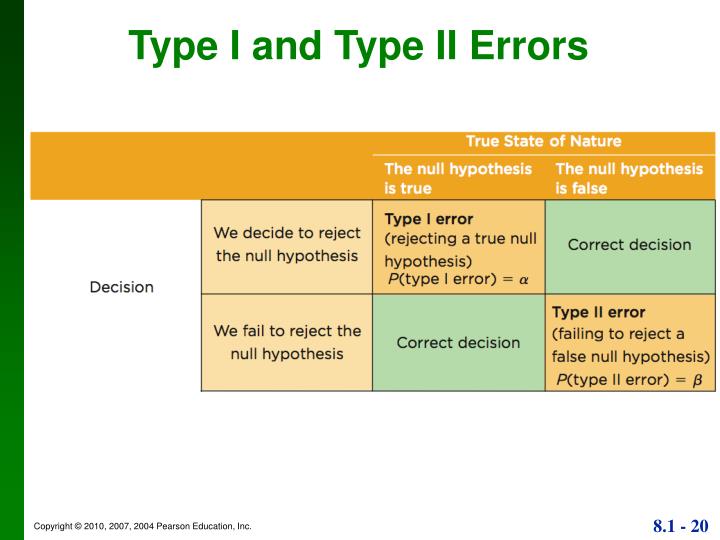

In practice, we typically view Type I errors as “bad” or “not good” than Type II errors, because the former involves declaring a scientific finding that is not correct. This will, however, cause the Type I error to be large. This can be obtained by having slightly higher value of significance level ssuch as 0.1. Alternatively, The Type II error can be made small by rejecting H0 in the presence of even modest evidence that it does not hold. However, this will result in an increase in the Type II error. This would mean a very small value of significance level such as 0.01. The Type I error can be made small by only rejecting H0 if we are quite sure that it doesn’t hold. But in practice, this is extermely hard to achieve. Ideally it is desired that both the Type I and Type II error rates should remain small. In other cases when one rejects the Null Hypothesis when it is false or not true, and when fails to reject the Null hypothesis when it is true is the correct decision.It can also be termed as a false negative. Type II Error: When one fails to reject the Null hypothesis when it is actually false or does not hold good, one commits a Type II error.Type I Error: When one rejects the Null Hypothesis (H0 – Default state of being) given that H0 is true, one commits a Type I error.Given the diagram above, one could observe the following two scenarios: Type I Error & Type II Error Explained with Diagram Mathematically speaking, if the significance level is set to be 0.05, it is acceptable/OK to falsely or incorrectly reject the Null Hypothesis for 5% of the time. Common values for significance level are 0.05 and 0.01, although, on average scenarios, 0.05 is used. In order to achieve the lower Type I error, the hypothesis testing assigns a fairly small value to the significance level. In other words, the innocent person is convicted. This means that the person is held guilty although he/she was not guilty. However, the rejection of null hypothesis is false. This means that the person is held guilty. Based on the evidence gathered, the null hypothesis that the person is not guilty gets rejected. The null hypothesis will be that the person is not guilty or innocent. The claim made or the hypothesis is that the person has committed a crime or is guilty. Lets try and understand type I error with the help of person held guilty or otherwise given the fact that he is innocent. Type I error is also called as “ false positive“. Thus, it is recommended that one should aim to keep Type I errors as small as possible. This essentially means that unexpected outcomes or alternate hypotheses can be true. Generally, a higher Type I error triggers eyebrows because this indicates that there is evidence against the default state of being. The probability of rejecting a null hypothesis when it actually holds good is called as Type I error. When doing hypothesis testing, one ends up incorrectly rejecting the null hypothesis (default state of being) when in reality it holds true.


 0 kommentar(er)
0 kommentar(er)
